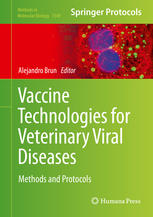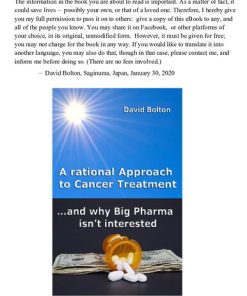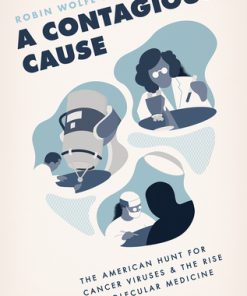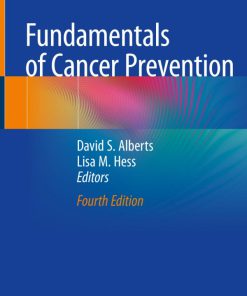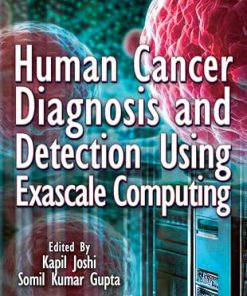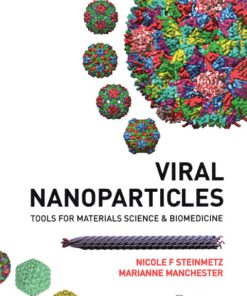Human Papillomavirus Proving and Using a Viral Cause for Cancer 1st Edition by David Jenkins,Xavier Bosch 9780128144572 0128144572
$50.00 Original price was: $50.00.$25.00Current price is: $25.00.
Human Papillomavirus Proving and Using a Viral Cause for Cancer 1st Edition by David Jenkins,Xavier Bosch – Ebook PDF Instant Download/Delivery:9780128144572,0128144572
Full download Human Papillomavirus Proving and Using a Viral Cause for Cancer 1st Edition after payment
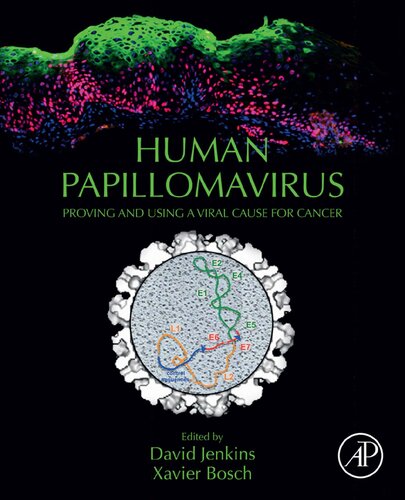
Product details:
ISBN 10:0128144572
ISBN 13:9780128144572
Author:David Jenkins,Xavier Bosch
Human Papillomavirus: Proving and Using a Viral Cause for Cancer presents a steady and massive accumulation of evidence about the role of HPV and prevention of HPV-induced cancer, along with the role and personal commitment of many scientists of different backgrounds in establishing global relevance. This exercise involved years of personal commitment to proving or disproving an idea that aroused initial skepticism, and that still has difficult implications for some. It remains one of the big successes of medicine that exploited both established medical science dating back to the nineteenth century and new molecular genetic science during a time of transition in medicine.
Presents a comprehensive, up-to-date review of the role of HPV in cancer from those involved in its study
Includes the way evidence on the role and utility of HPV based prevention has been accumulated over almost 40 years
Gives a series of vignettes of individual scientists involved in the development of the science of HPV and cancer at different stages and their experiences and reasons for involvement
Human Papillomavirus Proving and Using a Viral Cause for Cancer 1st Table of contents:
General Introduction—The Background to Human Papillomavirus and Cancer Research
Why Worry About Human Papillomavirus?
The Book
First Class Medical Science Is Not the Only Issue
Cervical Cancer Was the Driver of Human Papillomavirus Research
Finding the Role of Human Papillomavirus in Cervical Cancer
Proving the Causal Role of Human Papillomavirus in Cervical Cancer
The Importance of Human Papillomavirus DNA Testing for Clinical Research Into Human Papillomavirus and Cancer and Its Prevention
The Complex Interactions of Academic Science, Clinical Medicine, and the Corporate World
Human Papillomavirus Beyond Cervical Cancer
The Key Role of Human Papillomavirus in Preventing Cervical Cancer
Cervical Screening Before Human Papillomavirus
Redefining the Pathology of Precancer in the Light of Human Papillomavirus—The Bethesda System and Its Successors
The Move to Change Cervical Screening Based on Human Papillomavirus Science
Applying Human Papillomavirus Screening Globally
Development of Biomarkers
Natural and Artificial Immune Responses to Human Papillomavirus and Human Papillomavirus Vaccines
Developing Human Papillomavirus Vaccines
The Impact of Corporate Human Papillomavirus Vaccine Trials and Marketing
Human Papillomavirus Vaccination in Practice
Human Papillomavirus and Modern Medical Science
The Future
Further Reading
Chapter 1. A Brief History of Cervical Cancer
Abstract
Understanding Cervical Cancer—From Paleopathology to the 19th Century
Transforming Western Medicine and the Rise of Medical Science
The Idea of Prevention ()
Cervical Cancer Prevention by Cervical Cytology Screening
Encouraging Participation in Cervical Cancer Screening
Evolution of Ideas on the Causes of Cervical Cancer, Male Role, and Transmission of a Causative Agent
Further Reading
Section 1: Proving the Role of Human Papillomavirus in Cervical Cancer: Studies in the Laboratory, Clinic, and Community
Section 1. Proving the Role of Human Papillomavirus in Cervical Cancer: Studies in the Laboratory, Clinic, and Community
Introduction
Chapter 2. Linking Human Papillomavirus to Human Cancer and Understanding Its Carcinogenic Mechanisms
Abstract
Animal Papillomaviruses: From Papillomas to Cancers
The Search for Infectious Agents Associated With Cervical Cancer
The Failure of the Herpes Hypothesis
Molecular Tools
The Human Papillomavirus Hypothesis
Southern Blotting
Cloning Human Papillomavirus DNAs
Epidermodysplasia Verruciformis
Identifying HPV 11, HPV 16, and HPV 18
Extending the Range of HPV Types
The Advent of PCR
Studying HPV Gene Expression in Lesions
HPV 16 and 18 in Neoplastic Transformation: E6 and E7 Genes
Additional Pioneering Studies of Immortalization and Transformation
Recapitulation of Three-Dimensional Epithelial Tissues in Raft Cultures as an Experimental Model for Investigations of HPV-Host Tissue Interactions and Mechanisms of Carcinogenesis
Conclusion
A Vignette: Early Clinical Experience With Human Papillomavirus
References
Chapter 3. Demonstrating the Importance of Different HPVs in Cervical Cancer and Other HPV-Related Cancers
Abstract
Introduction
Human Papillomavirus as Etiological Agent of Cervical Cancer
Human Papillomavirus Association With Cervical Cancer: Case-Control Studies
Human Papillomavirus Prevalence and Distribution in Cervical Cancer and Other Human Papillomavirus-Associated Carcinomas
Human Papillomavirus-Type Distribution of Oncogenic Human Papillomavirus Types Across the Full Spectrum of Cervical Disease
Human Papillomavirus Classification and Its Association With Carcinogenicity
Implications
References
Chapter 4. Finding How Human Papillomaviruses Alter the Biochemistry and Identity of Infected Epithelial Cells
Abstract
Parasitic Lifestyles
The Enigmatic, Illogical Life Cycle of High-Risk Human Papillomaviruses
Inhibition of Innate Immune Signaling
Mechanisms That Minimize Human Papillomavirus Genome Loss During Cell Division
High-Risk HPV E6 and E7 Trigger and Subvert Cell-Intrinsic Defense Mechanisms
Human Papillomavirus Infections Render Host Cells Genomically Unstable
Concluding Remarks
References
Chapter 5. Biology of the Human Papillomavirus Life Cycle: The Basis for Understanding the Pathology of PreCancer and Cancer
Abstract
Productive Infection Facilitates the Assembly and Release of Virus Particles
Nonproductive Infection Leads to the Development of Neoplasia
The Role of HPV Gene Products in the Progression From Neoplasia to Cancer
Understanding the Cervix and Other Vulnerable Epithelial Site in the Development of Cancer
Understanding HPV Biology in Relation to the Pathological Classification of HPV-Associated Cancers and Precancer, and the Selection of Treatment Regimes
Conclusion
Acknowledgement
References
Chapter 6. The Pathology of Cervical Precancer and Cancer and its importance in clinical practice
Abstract
Introduction: Framing the Problem
Terminology: Historical Perspective
Diagnostic Process and Specimen Types
Gross Morphology–Colposcopic Features
Morphology (Histology and Cytology)
Glandular Neoplasia
Using Our Molecular Understanding of Disease Progression to Improve Diagnosis: Detection of HPV DNA and Biomarkers of Infection
Biomarkers on Cytology Samples
Clinical Course and Management of Cervical Neoplasia
Further Reading
Chapter 7. Developing and Standardizing Human Papillomavirus Tests
Abstract
Historical Development
Design and Performance Assessment of Human Papillomavirus Tests
Performance Assessment of HPV Tests and Requirements for Ongoing Quality Assurance
Brief Summary of Selected Commercial Human Papillomavirus Tests
Future Perspectives
Overview and Summary
References
Chapter 8. Proving the Causal Role of Human Papillomavirus in Cervical Cancer: A Tale of Multidisciplinary Science
Abstract
Avoiding a Clash Between Different Lines of Scientific Evidence
Learning From Errors
A New Beginning for Molecular Epidemiology
The Birth of a New Paradigm in Cancer Prevention
Moving From Understanding Etiology to Improving Cervical Cancer Screening
The Opportunity to Prevent Cervical Cancer With a Vaccine
From Discovery to a Nobel Prize
References
Chapter 9. The Natural History of Human Papillomavirus Infection in Relation to Cervical Cancer
Abstract
Key Bullet Points
Transmission of Human Papillomavirus
Lack of Strong Epidemiologic Indicators for Human Papillomavirus Persistence (or Clearance)
Roles of Parity, Female Hormones and Tobacco
References
Section 2: Human Papillomavirus Beyond Cervical Cancer
Section 2. Human Papillomavirus Beyond Cervical Cancer
Introduction
Chapter 10. Low-risk Human Papillomavirus: Genital Warts, Cancer and Respiratory Papillomatosis
Abstract
The Problem: Genital Warts and Laryngeal Papillomatosis
Historical Aspects of Genital Warts and Laryngeal Papillomatosis
Risk Factors, Natural History, and Treatment of Genital Warts and Laryngeal Papillomatosis
Pathology of Genital Warts and Laryngeal Papillomatosis
Human Papillomavirus in Genital Warts and Laryngeal Papillomatosis
Low-Risk Human Papillomavirus Types and Cancer
Therapeutic and Prophylactic Vaccines Against Genital Warts and Laryngeal Papillomatosis
Past, Present, and Future Epidemiology of Genital Warts and Laryngeal Papillomatosis
Conclusion
Acknowledgements
References
Chapter 11. Human Papillomavirus Infection and Related Diseases Among Men
Abstract
Where the Story of Male Human Papillomavirus Infection Among Heterosexual Men Began: The Male Factor in Cervical Carcinogenesis
Human Papillomavirus Natural History in Heterosexual Men—Past and Current Understanding
The HIM Study: Population and Procedures
Genital Human Papillomavirus Infection
Anal Human Papillomavirus Infection
Oral Human Papillomavirus Infection
Human Papillomavirus Serology
Heterosexual Human Papillomavirus Transmission
References
Chapter 12. Anal HPV Infection and HPV-Associated Disease
Abstract
Studies of Anal HPV Infection: Their Origins and Inspirations
Development of Tools to Study Anal HPV Infection and HPV-associated Diseases
Anal Cancer and Immune Suppression
Anal Cancer in HIV-infected Men and Women in the era of Antiretroviral Therapy
The Future: An Emerging Field, and Potential for Contributions to Understanding the Overall Biology of HPV Infection
Summary
References
Chapter 13. Oropharyngeal Human Papillomavirus and Head and Neck Cancer
Abstract
Introduction
Epidemiology
Molecular Pathophysiology of Human Papillomavirus Carcinogenesis
Prognosis of Human Papillomavirus-Positive Oropharyngeal Squamous Cell Carcinoma
Trends in Human Papillomavirus Oropharyngeal Squamous Cell Carcinoma Staging
Prevention
Conclusion
Financial Disclosures
Conflicts of Interest
References
Chapter 14. Vulvar, Penile, and Scrotal Human Papillomavirus and Non–Human Papillomavirus Cancer Pathways
Abstract
History of Vulvar, Penile, and Scrotal Cancer Reflects Both Human Papillomavirus–related and Non–Human Papillomavirus–related Etiology
Burden of Vulvar, Penile, and Scrotal Cancer
Pathology of Vulvar, Penile, and Scrotal Neoplasia
Cancer Pathways of Vulvar, Penile, and Scrotal Cancer: Human Papillomavirus and Non–Human Papillomavirus Related
Common Characteristics Between Vulva, Penile, and Scrotal Carcinoma
Clinical Management of Vulvar, Penile, and Scrotal Neoplasia
Conclusion
References
Section 3: Using Human Papillomavirus Knowledge to Prevent Cervical and Other Cancers
Section 3. Using Human Papillomavirus Knowledge to Prevent Cervical and Other Cancers
Introduction
Chapter 15. Triage of Women With ASCUS and LSIL Abnormal Cytology: The ALTS Experience and Beyond
Abstract
Evidence That Human Papillomavirus Testing May Be Useful for Triage of Some Abnormal Cytology
Origin and Development of the ALTS Study
Main Results of the ALTS Study
Impact of the ALTS Study in Changing Medical Practice in the United States and Worldwide
Metaanalyses on the Clinical Accuracy of Human Papillomavirus DNA Testing to Triage Women With ASCUS
References
Further Reading
Chapter 16. Primary Screening by Human Papillomavirus Testing: Development, Implementation, and Perspectives
Abstract
Development of HPV-Based Screening
HPV Testing Versus Cytology
Sole HPV Testing or HPV Testing Combined With Cytology?
Screening Intervals, Follow-up of HPV Positive Women, and Age to Start Screening
Triage of HPV Positive Women
Validation of HPV Tests for Cervical Screening
Self-Sampling
The New HPV Based Program in the Netherlands
HPV Negative and Low-Risk HPV Positive CIN3 and Carcinomas
Future Perspectives for Cervical Screening
Conflicts of Interest
Disclaimer
References
Chapter 17. Infection to Cancer—Finding Useful Biomarkers for Predicting Risk of Progression to Cancer
Abstract
Introduction
Biomarkers for Transforming Human Papillomavirus -Infections: p16INK4a and Ki-67
Biomarkers for productive human papillomavirus -infections: HPV E4, L1
Biomarkers for Transforming Human Papillomavirus -Infections: Methylation of Cellular Genes
Biomarkers for Transforming HPV-Infections: Methylation of Viral Genes
References
Chapter 18. Immune Responses to Human Papillomavirus and the Development of Human Papillomavirus Vaccines
Abstract
Introduction
Innate Immunity
Adaptive Immunity
Immunity to Human Papillomavirus: A Successful Infectious Agent
HRHPVs Downregulate Interferon Responses
Human Papillomavirus Interactions With Dendritic Cells Professional Antigen Presenting Cells
The Immune Response to Human Papillomavirus in Natural Infections
Immune Responses Are Deregulated During Human Papillomavirus-Associated Neoplastic Progression
The Mucosal Environment
Humoral Immunity to Human Papillomavirus and the Development of Human Papillomavirus Vaccines
What Animal Papillomavirus Infections Told Us
Generation of Virus-Like Particles
Did the Antibodies Generated by L1 Virus-Like Particles Protect—Preclinical Animal Studies
Human Papillomavirus Virus-Like Particle Vaccines
A Vignette: The Story of jian zhou
References
Chapter 19. Clinical Trials of Human Papillomavirus Vaccines
Abstract
Introduction
Limitations of Secondary Prevention
Primary Prevention
Timeline of HPV Vaccine Success Story
Designing Clinical Trials of Preventive HPV Vaccines
Clinical Trial Endpoints
HPV Vaccination Phase II/III Clinical Efficacy Trials in Women With Active Follow-Up
Phase 3 Efficacy Trials
Quadrivalent HPV Vaccine Phase 3 Trial (FUTURE* I/II)
Phase 3 Studies of the Bivalent HPV16/18 Vaccine
Comparison of Quadrivalent and Bivalent Vaccine Efficacy Against Cervical HSIL Based on Clinical Trials
The Overall Implementation of HPV Vaccination
Subsequent Additional Phase 3 Trials
Broad Spectrum Nonavalent HPV Vaccine Trial
HPV Vaccine Trials in Women Older Than 25 years
Phase 4 Trials to Evaluate Vaccine Performance in Populations
HPV Vaccine Efficacy Against External Genital Lesions
High Grade Vulvar and Vaginal Intraepithelial Neoplasia (VIN2-3, VaIN2-3)
Cross-Protective Efficacy Against Nonvaccine High Risk HPV Types
HPV Vaccination Phase III Clinical Efficacy Trials in Men With Active Follow-Up
Prior HPV Vaccination Prevents Recurrent HPV Related High Grade Disease
HPV Vaccination After Treatment for CIN Prevents Recurrent HPV Related High Grade Disease
HPV Vaccine Safety
Conclusion
A vignette: joining the dark side: a pathology academic joins a vaccine manufacturer
References
Further Reading
Section 4: Accumulating Long-Term Evidence for Global Control and Elimination of Human Papillomavirus Induced Cancers
Section 4. Accumulating Long-Term Evidence for Global Control and Elimination of Human Papillomavirus Induced Cancers
Introduction
Chapter 20. The Key Role of Mathematical Modeling and Health Economics in the Public Health Transitions in Cervical Cancer Prevention
Abstract
Introduction
General Background to Mathematical Models in Population Health
History of the Early Development of Cervical Cancer Models: The 1980s and 1990s
The 2000s: A New Field Emerges
Recent Developments in Cervical Cancer Modeling: 2010–2019
Conclusions
Acknowledgments
Conflict of Interest
List of Abbreviations
A Vignette: The Story Behind the First Cost-Effectiveness Evaluations of Human Papillomavirus Vaccination (Told by Shalini Kulasingam)
References
Chapter 21. Twelve Years of Vaccine Registration and the Consequences
Abstract
HPV Vaccines and Their Introduction
Conclusion
References
Chapter 22. Political and Public Responses to Human Papillomavirus Vaccination
Abstract
Introduction
Case Studies
Discussion
References
Chapter 23. Expanding Prevention of Cervical Cancer in Low- and Middle-Income Countries
Abstract
Case Study
Perspective From Asia
Global Perspective
References
Further Reading
Epilogue: Looking forward to cervical cancer elimination
Integrating Cervical Cancer Prevention in the Frame of Other National Health Priorities
Natural History and Spectrum of Disease Related to Human Papillomavirus
Research Areas in the Screening and Treatment Fields
Research in the Vaccination Field
Comprehensive Research on Combinations of Human Papillomavirus Screening and Human Papillomavirus Vaccination
Antivaccines and Antivaccination Campaigns
Compliance Regulations and Public and Private Partnerships
Acknowledgements
Competing Interests
People also search for Human Papillomavirus Proving and Using a Viral Cause for Cancer 1st :
the human papillomavirus (hpv)
human papillomavirus pronunciation
human papillomavirus (hpv) pronunciation
can you test for human papillomavirus
human papillomavirus providing and using a viral cause for cancer
Tags:
David Jenkins,Xavier Bosch,Papillomavirus,Cancer,Viral
You may also like…
Travel - United States of America - Travel
Relationships & Lifestyle - Health - Diseases & Disorders
Medicine - Veterinary Medicine
Medicine - Diseases
A Rational Approach to Cancer Treatment and Why Big Pharma isn t interested 1st Edition David Bolton
Uncategorized
Viral Nanoparticles Tools for Materials Science and Biomedicine 1st Edition Nicole F. Steinmetz
Romance - Contemporary Romance
Ruined Promises (Promise #1) 1st Edition Stefanie Jenkins [Jenkins






